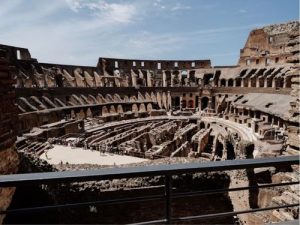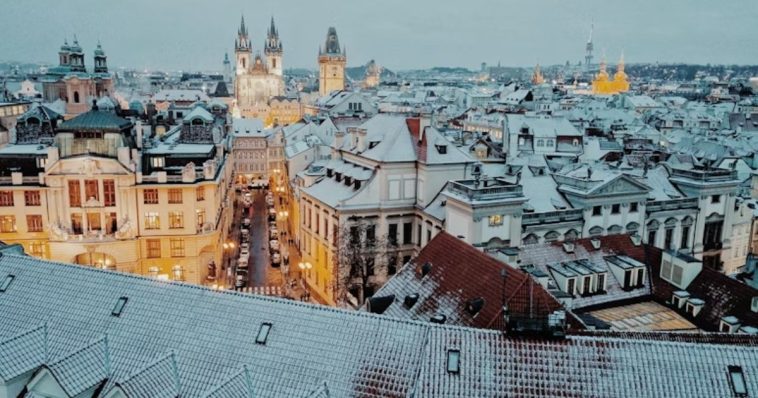Some places seem untouched by the modern world, where streets, buildings, and traditions have remained virtually unchanged for centuries. Traveling to these destinations is like stepping through a portal into the past—where every stone, cobblestone alley, and ancient monument tells a story. From medieval towns to historic cities and ancient ruins, these destinations allow travelers to experience history firsthand, offering a unique blend of culture, architecture, and atmosphere that feels as though it is frozen in time.
10 Historic Cities That Bring Time to Life

1. Bruges, Belgium
Bruges, often celebrated as the “Venice of the North,” is a city that feels frozen in time, where the rhythms of modern life slow to match its medieval heartbeat. Its narrow cobblestone streets twist between charming brick houses, quaint cafés, and artisan shops. At the same time, serene canals reflect the façades of centuries-old buildings, casting a fairy-tale ambiance over every stroll. Horse-drawn carriages meander along quiet lanes, and the gentle murmur of water against canal walls enhances the sense of stepping into a storybook, where every corner hints at centuries of history preserved with remarkable care.
Visitors can climb the iconic Belfry Tower to behold sweeping panoramic views of terracotta rooftops and winding waterways, wander the lively Markt square where history and daily life intertwine, or explore Gothic churches, intricately decorated guildhalls, and hidden bridges tucked away in quiet corners. Each turn in Bruges offers a window into medieval Europe, immersing travelers in the artistry, culture, and rhythms of a bygone era. From its architectural splendor to the tranquil charm of its canals, Bruges is more than a city—it is a living museum, inviting all who visit to step back in time and experience the enchantment of history firsthand.
2. Kyoto, Japan
Kyoto, the former imperial capital of Japan, is a city where centuries of tradition coexist gracefully with the rhythms of modern life. Its streets are lined with wooden machiya houses, while over 1,000 temples and shrines offer quiet sanctuaries amid bustling neighborhoods. Serene gardens, koi-filled ponds, and meticulously maintained landscapes create spaces of reflection, inviting visitors to slow down and experience Japan’s rich cultural heritage firsthand. Seasonal rituals, traditional tea ceremonies, and vibrant festivals further preserve the city’s legacy, allowing travelers to witness customs that have been passed down for generations.
Exploring Kyoto is a journey through both history and nature. Strolling through the towering bamboo stalks of the Arashiyama Bamboo Grove evokes a sense of calm and wonder. At the same time, the Philosopher’s Path offers a contemplative walk alongside cherry blossoms or autumn leaves, depending on the season. Every temple courtyard, moss-covered stone, and gently flowing stream tells a story, blending spirituality, artistry, and everyday life. In Kyoto, the past is never distant—it is alive in the sights, sounds, and rhythms of the city, offering visitors an immersive experience where tradition and modernity intertwine seamlessly.
3. Carcassonne, France
The walled city of Carcassonne, situated in southern France, is a vision straight out of a medieval fairy tale. Its imposing double-layered fortifications, towering ramparts, and 53 defensive towers have been meticulously restored, preserving the atmosphere of a 13th-century stronghold. Cobblestone streets wind through the citadel, where stone houses, quaint shops, and historic squares evoke the rhythms of life in a bygone era. Crossing the drawbridge or walking along the battlements, visitors can almost hear the echoes of knights’ armor clinking and merchants’ calls resonating through the narrow alleys.
Inside the fortified walls, history comes alive at every turn. Visitors can explore the Château Comtal, a fortress within the fortress, or meander through the atmospheric streets, imagining life during sieges, festivals, and market days. From the vantage point of the ramparts, panoramic views of the surrounding Languedoc countryside highlight why Carcassonne was both strategically vital and visually spectacular. More than just a historical site, Carcassonne offers an immersive experience where travelers can step into the Middle Ages and witness the artistry, engineering, and daily life of a medieval city brought vividly to life.
4. Petra, Jordan
Petra, the ancient Nabatean city hewn from rose-colored cliffs, is a breathtaking testament to human ingenuity and timeless beauty. Approaching through the Siq, a narrow, winding gorge flanked by towering rock walls, travelers are gradually immersed in an atmosphere of anticipation and wonder. The dramatic reveal of the Treasury (Al-Khazneh), with its intricately carved façade illuminated by the desert sun, is an unforgettable moment that evokes the grandeur of a city built over 2,000 years ago. Beyond the Treasury, Petra unfolds as a labyrinth of tombs, temples, and amphitheaters, each carved with meticulous craftsmanship that showcases the Nabateans’ architectural brilliance and deep cultural sophistication.
The surrounding desert amplifies Petra’s aura of mystery and timelessness. Rugged cliffs, hidden valleys, and windswept canyons create a dramatic natural backdrop that enhances the city’s otherworldly charm. Walking among the ancient structures, visitors can almost hear the echoes of past traders, pilgrims, and residents as they navigated this thriving desert metropolis. Petra is more than an archaeological site—it is a journey into history, where nature and human creativity merge, leaving travelers with a profound sense of awe and connection to a civilization that thrived in harmony with its harsh yet stunning environment.
5. Havana, Cuba
Havana is a city where history pulses through every cobblestone street, brightly painted building, and classic American car cruising past. Its plazas, colonial forts, and grand cathedrals stand as enduring reminders of centuries of Spanish influence, while the rhythmic beats of salsa, live music spilling onto the streets, and vibrant local life keep the city wonderfully alive. Walking through Old Havana feels like stepping into a living 1950s postcard, where the faded elegance of pastel façades and wrought-iron balconies tells stories of colonial grandeur, revolutionary change, and a resilient culture that thrives despite the passage of time.
Beyond its architectural and historical charm, Havana is a whole sensory experience. The scent of Cuban cigars blends with the aroma of street-side coffee, while the laughter, conversation, and music of locals create an irresistible energy. Whether exploring the lively squares, climbing the ramparts of El Morro, or simply wandering the narrow alleys lined with artisanal shops, visitors are immersed in a city where past and present coexist seamlessly. Havana is more than a destination—it’s a celebration of heritage, culture, and the enduring spirit of a city that invites travelers to experience history in motion.
6. Cusco, Peru
Once the thriving capital of the Inca Empire, Cusco is a city where history lives in every stone. Its narrow cobblestone streets, bustling plazas, and centuries-old churches are built atop the foundations laid by masterful Inca masons, creating a layered architectural narrative that intertwines indigenous and colonial influences. Walking through the city, visitors can admire the precise stonework of Inca walls alongside ornate Spanish baroque façades, experiencing a seamless blend of cultures that tells the story of resilience, adaptation, and centuries of human ingenuity.
Cusco also serves as the gateway to the legendary Machu Picchu, offering travelers access to one of the most extraordinary archaeological sites in the world. From the terraced mountainsides to sacred temples and intricate stone constructions, Machu Picchu showcases the engineering genius and spiritual depth of the Inca civilization. In Cusco itself, vibrant markets, historic plazas, and ceremonial spaces offer visitors the opportunity to immerse themselves in the city’s living heritage. Every corner reflects the history, spirituality, and enduring spirit of the Andean people, making Cusco not just a stop on the map but an unforgettable journey into the heart of the Inca world.
7. Bagan, Myanmar
Bagan is an ancient city that feels suspended in history, with over 2,000 Buddhist temples, pagodas, and stupas scattered across a vast plain. Rising above the mist at sunrise or sunset, the temples create a surreal landscape, where each structure tells a story of devotion and artistic ingenuity. Travelers can explore by bicycle or hot-air balloon, immersing themselves in the scale, intricacy, and tranquility of this centuries-old civilization. Bagan is not just a visual feast—it’s a spiritual journey through time, where every temple and fresco reflects the cultural and religious history of Myanmar.
8. Rhodes, Greece
The Old Town of Rhodes is a living testament to medieval Europe and the legacy of the Knights of St. John. Its fortified walls, cobblestone streets, and stone mansions evoke a bygone era. At the same time, the Palace of the Grand Master and ancient gates offer a glimpse into the power and artistry of medieval knighthood. Walking through Rhodes’ maze-like streets, visitors can explore quaint squares, hidden courtyards, and centuries-old churches, feeling as though they’ve stepped into a history book brought to life.
9. Fez, Morocco

Fez is a city where history is not just preserved—it thrives in daily life. The medina, Fes el-Bali, is a UNESCO World Heritage Site filled with winding alleys, bustling souks, and ancient riads. Leather tanneries, traditional workshops, and mosques unchanged for centuries create a sensory overload: the smell of spices, the sound of artisans hammering, and the visual maze of colorful tiles and textiles. For travelers, Fez offers a unique immersion into medieval Islamic culture, where navigating the streets feels like exploring a living museum.
10. Oaxaca, Mexico
Oaxaca blends colonial-era architecture with indigenous traditions, creating a city where history feels palpable. Cobblestone streets, brightly colored buildings, and baroque churches coexist with lively markets and artisan workshops. Travelers can wander the Santo Domingo Church, explore traditional weaving and pottery, or experience local festivals like the Day of the Dead, which preserve centuries-old customs. Oaxaca is a destination where the past and present coexist, offering a cultural immersion that feels timeless.
Where Every Step Tells a Story
These destinations captivate because they allow travelers to experience history in its living form. Cobblestones, temples, fortresses, and markets aren’t just sights—they’re entry points into centuries-old lifestyles, customs, and architecture. Every alleyway, square, and monument becomes a story waiting to be discovered.
Traveling through these “frozen” cities and sites reminds us that history is tangible, immersive, and accessible. By walking where medieval merchants once trod, entering temples built centuries ago, or exploring fortresses preserved through the ages, travelers connect with humanity’s collective past in ways no textbook ever could. These destinations prove that the best journeys aren’t just measured in miles—they’re measured in time, perspective, and the stories that unfold at every step.



